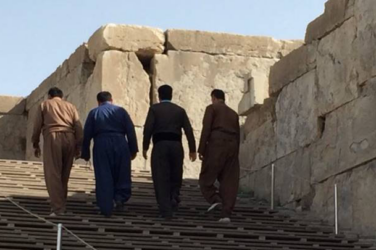*Trigger warning: This article includes a description of sexual harassment and aggression.
The public is still a threat to women around the globe. E&M‘s Nisa Sherifi shares a frightening personal experience to emphasise that this needs to change, now! And as long as men don’t stop making the streets unsafe, urban planners need to account for the needs of the more vulnerable members of society wherever they can.
“It’s second nature to walk home before the sun goes down,
And put your keys between your knuckles when there’s boys around,
Isn’t it funny how we laugh it off to hide our fears,
But there’s nothing funny here.” – Dua Lipa
This is the opening verse to Dua Lipa’s song “Boys will be boys”. This song was heard by millions of people, with over half of these listeners being, presumably, women. I’m not saying this because I have access to any data on the demographics of the listeners, but rather because I have access to the lyrics. An ode to the realities of women and marginalised communities, this song struck millions with a feeling of relatability. The song rightfully discusses, and criticises, the idea that “Boys will be boys”, while pointing out that “girls will be women”. What the song also indirectly implies is that the streets are male. They are made to be male, deliberately or not. This is because for many years urban development was “gender-blind”, just like it was blind to the needs of other vulnerable and marginalised communities.
This is because for many years urban development was “gender-blind”, just like it was blind to the needs of other vulnerable and marginalised communities.
But what the fuck is this crazy feminist talking about? The street is the street, it’s not even alive, how can it have a gender or be blind? There she goes with her hysterical theories, you (or one of your uncles) might be thinking. Let me explain with a personal example.
This summer I went to a music event somewhere in the outskirts of Paris. I was later told by friends that this event had been in a “rougher” part of town. I grew up in a post-war context, in a country that’s not the most aesthetically pleasing, so I don’t tend to notice or attribute any meaning to urban architecture around me. In any case, from my experience of living in over 5 European cities, and according to quite a few experts, the issue I am about to discuss crosses class, race, and other lines. That issue is sexual harassment. Women get sexually harassed and aggressed in all contexts, wether in the home or outside. While it is more common to be catcalled in less affluent parts of the city, affluent neighbourhoods do not have completely clean hands either, because I believe the problem is one of male dominance, rather than class or race. The problem lies with how safe streets are for women, or rather, how easy it is for men to get away with aggressive behaviour.
As Dua said, “it’s second nature to walk home before the sun goes down”, and unless I have planned going on a night out, I also “prefer” walking home before the sun goes down, especially if I am alone. This is probably because I have internalised the widespread idea that harassment somehow depends on context and circumstances. In my culture we tend to say that “the night has no proof” or witness, and this idea seems to be very widespread across the world. In fact, in law school they taught me that institutions are more likely to side with aggressors if the aggression took place in circumstances that evoke the idea that the victim was “asking for it”.
Anyways, back to the example.
After meeting a couple of friends at this event, I decided to head back home around 6 p.m. It seemed like the perfect time to go as the sun stopped being as scorching, and it was still broad daylight, giving me the illusion of safety. So I started walking to the closest metro station. I was walking on a bridge which had space for pedestrians in each corner, but rather fast car tracks in the middle. During this walk, a man riding a bike behind me took the liberty to grope me. I was startled, disgusted, and managed to insult him as much as possible before he biked away. I tried to stop thinking about it; sure, it was worse than being catcalled, but he was gone, and so was the danger, so why dwell on it. Or so I thought.
Further down in that bridge, there were some constructions or renovations going on, and so they had put up scaffolds to “protect” people walking on that road. Except, as is virtually always the case, the scaffold was not see-through, and created a sort of tunnel. At that point, crossing the street was an impossibility due to the cars and lack of pedestrian crossing, so taking this make-shift “protective” tunnel was the only option of getting to the metro stop. I didn’t think much of it, I had gone through many of these in Paris, where constructions and renovations seem to take an eternity. So, I entered. My aggressor had been waiting for me somewhere in the middle of that tunnel, the exit of which he had blocked with his bike. Upon seeing me, he decided to come towards me, and despite the insults, punches and kicks I threw, he aggressed me. I managed to escape without it getting much worse, but left in a state of fear, shock, and rage.
With a shaky voice, and shaky hands, I told every woman and girl I saw on my way to the metro to grab any object they could use to defend themselves, or to cross the street, so they could avoid the aggression.
While I was walking, I had subconsciously started thinking about the circumstances in which I found myself. It was broad daylight, and it didn’t happen on a deserted street, not that it meant I was in any way more to blame had it been the opposite. But still, he had chosen that spot specifically because it was hidden, giving him the freedom to aggress. The choice was deliberate; the street worked in his favour.
What this made me realise however was that the street was not made for me, or for any woman. In fact, the street was made by men, for men.
What this made me realise however was that the street was not made for me, or for any woman. In fact, the street was made by men, for men. As I dug into the topic, I found that it was a rather well researched phenomenon.
From sociology to urbanism, social scientists, policy makers, and urban developers had studied the factors that make public spaces and architecture less accessible and more dangerous to vulnerable and marginalised communities, like women. Lack of visibility and proper lighting are at the very top of this list of factors, along with a lack of escape routes. These can be fixed through gender mainstreaming policies. These policies aim to improve public policies by using a gendered perspective in their elaboration and implementation. What that means is that instead of creating a policy or infrastructure from the perspective of the least vulnerable members of society, in this case (and all other cases, honestly) privileged men, we should make policies bearing in mind the needs and well-being of those that are the most excluded and likely to face barriers or dangers.
The underlying problem, of course, is not the streets themselves. The problem is men who endanger us in these streets. However, until these men become less of a direct threat to the millions of women, and other vulnerable people in public spaces, we need to make the streets safer.
Gender mainstreaming, gender blindness, and inclusion in urban development are not empty words and abstract theories. They are theories developed from the dangerous realities that women and other groups have to face in public spaces every day. Realities that most men simply do not have to consider, but that can cost the rest of us our lives, or lifelong trauma.
Policies like creating better visibility in streets won’t change much in the life of the average man that is not afraid of sexual harassment – yet it would considerably improve my life, and the lives of so many other women.
Policies like creating better visibility in streets won’t change much in the life of the average man that is not afraid of sexual harassment – yet it would considerably improve my life, and the lives of so many other women.
I hope this article will help raise awareness about the gender blindness that was, and is, the norm in urban development in most places. Furthermore, I hope my experience, which is in every way, shape, and form a common and widespread experience of women on the street, clears out the confusion around theories of inclusion in urban development.
Obviously, I hope that one day, boys will not “be boys”. Hopefully one day they will be non-threatening members of society. Until then, we need to make the streets safer, so we can also see our cities and streets as accessible places to enjoy, rather than sources of anxiety, potential trauma and violence.
Note: While this article uses gender binary terms in order to make generalisations, it is important to highlight that the issues that affect “women” in this article also affect marginalised communities and peoples. “Men” are those that were sexed male at birth, or perform the male gender.
Photo by Oscar Helgstrand from Pexels










